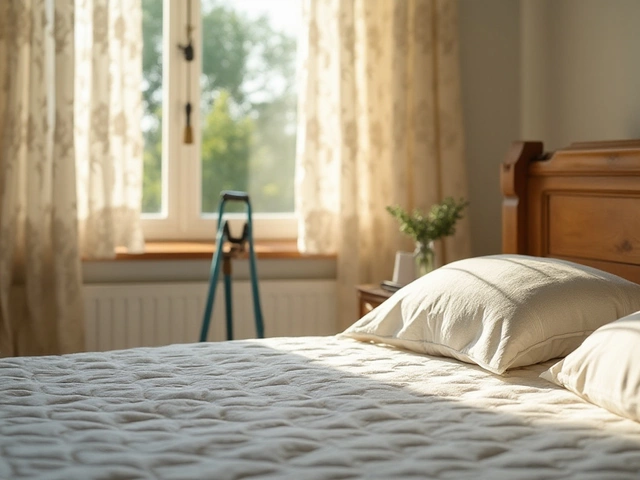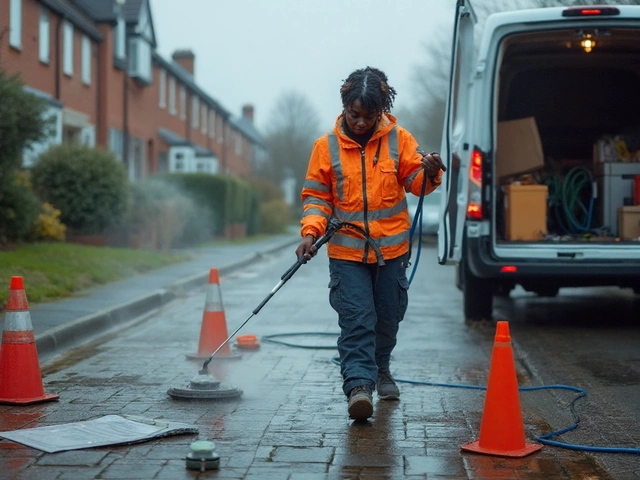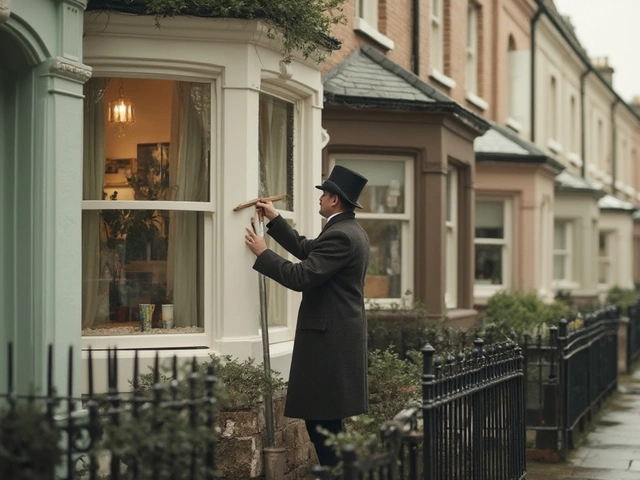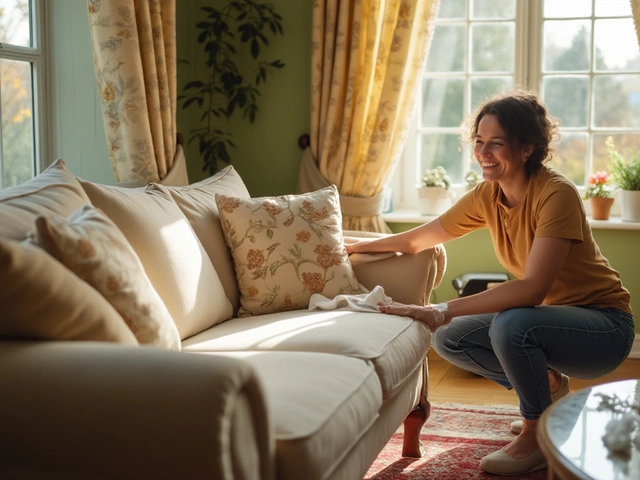Getting your full deposit back hinges on one thing: the place has to look as spotless as the day you moved in. Otherwise, your landlord keeps some (or all) of your money. But what does this “deep clean” actually involve?
End of tenancy cleaning isn’t just a quick tidy-up. Think every surface—the inside of the oven, behind the fridge, even the skirting boards—needs attention. If you skip any, your letting agent might flag it. Little things like fingerprints on light switches or smudges on windows can cost you.
Certain areas matter more than others. Kitchens need the most work: every cupboard emptied and wiped, appliances cleaned inside and out, limescale blasted from taps. In the bathroom, it’s all about descaling the shower and scrubbing grout lines so there’s no mildew or leftover hair. Even radiators and extractor fans should be dust-free.
A pro tip: always check your tenancy agreement or inventory for extra tasks, like shampooing the carpets or cleaning the patio. Agencies sometimes add these in small print, and forgetting them could be pricey. Keeping this mind-set saves you a ton of stress on moving day.
- Room-by-Room Cleaning Breakdown
- Hidden Spots Landlords Always Check
- What Most Tenancy Cleaning Services Don't Cover
- How to Make Sure You Pass Inspection
Room-by-Room Cleaning Breakdown
If you want to tick off everything landlords expect, you’ve got to get detailed—every room, every surface. Here’s how the hardcore cleaning breaks down for each room, so you don’t miss a spot and get hit in the wallet.
- Kitchen (the most scrutinized room):
- Clean inside and outside every kitchen cupboard and drawer. Don’t leave crumbs—they’ll check.
- Scrub all surfaces, including tiles and splashbacks.
- Oven and hob: Remove racks and soak them, degrease the inside, and wipe the exterior. Agencies often say about 40% of cleaning deposit deductions are due to dirty ovens.
- Fridge/freezer: Defrost, wipe inside and out, and leave the door open if you’re moving out completely.
- Microwave, extractor fan, and dishwasher: Don’t forget the filters and seals.
- Empty and sanitize the bin.
- Bathroom:
- Descale and scrub the shower, bathtub, and all tiles, including grout lines.
- Polish mirrors and taps to get rid of water spots.
- Toilet: Full disinfect inside, outside, and around the base.
- Wipe down radiators, cabinets, and any shelves.
- Bedrooms and Living Room:
- Dust and clean all furniture. Don’t forget under beds or behind sofas.
- Vacuum carpets—more than once if needed. Around 25% of deposit claims relate to dirty carpets. If it’s in your agreement, get them professionally cleaned.
- Windows (inside), sills, and curtain rails need wiping down.
- Hallways and Entryways:
- Clean all doors, handles, and light switches (hotspots for fingerprints).
- Sweep and mop floors or vacuum carpets.
Check out the average time different end of tenancy cleaning tasks take. This helps you plan—a rushed job is easy to spot:
| Area | Estimated Time (per room) |
|---|---|
| Kitchen | 2-3 hours |
| Bathroom | 1-1.5 hours |
| Bedroom | 45 min - 1 hour |
| Living Room | 1 hour |
If you work through one room at a time, self-checking as you go, you’ll avoid the most common reasons tenants lose their end of tenancy cleaning deposit.
Hidden Spots Landlords Always Check
Landlords and agents absolutely love catching people out with missed spots during end of tenancy cleaning. It’s never just about the main rooms—they’re hunting for overlooked corners that can justify docking your deposit. So, where do they look first?
- Inside kitchen appliances: Ovens are the number one culprit. They want to see racks wiped, trays grease-free, and no burnt bits stuck behind. Freezers and fridges? Defrosted, wiped down (don’t forget the seals and the handle crevices), and free from old food smells.
- Window tracks and sills: Even if your glass shines, the tracks fill up with dust, crumbs, and dead bugs. A quick vacuum and wipe here makes a big difference.
- Behind and under furniture: Don’t assume they'll skip moving beds or sofas—most do at least a quick check. They often find dust bunnies or dropped earrings, so get the vacuum crevice tool out.
- Extractor fans: In both the kitchen and bathroom, vents clog up and collect grime. Give them a once-over with a damp cloth and cotton bud if you can.
- Skirting boards and door tops: Wipe along these with a damp cloth; dust collects faster here than you think.
- Light switches and plug sockets: Greasy fingerprints are easy to miss but super obvious to someone checking the place for the first time.
- Under sinks: Look for any leaks or mold and clean around pipes. Old sponges or cleaning chemicals left behind count as a fail for most landlords.
Paying attention to these areas could mean the difference between a smooth move and a surprise bill. Bringing a friend in to spot-check these odd spots can really help. Nobody wants to lose money on something as silly as a dusty extractor fan.
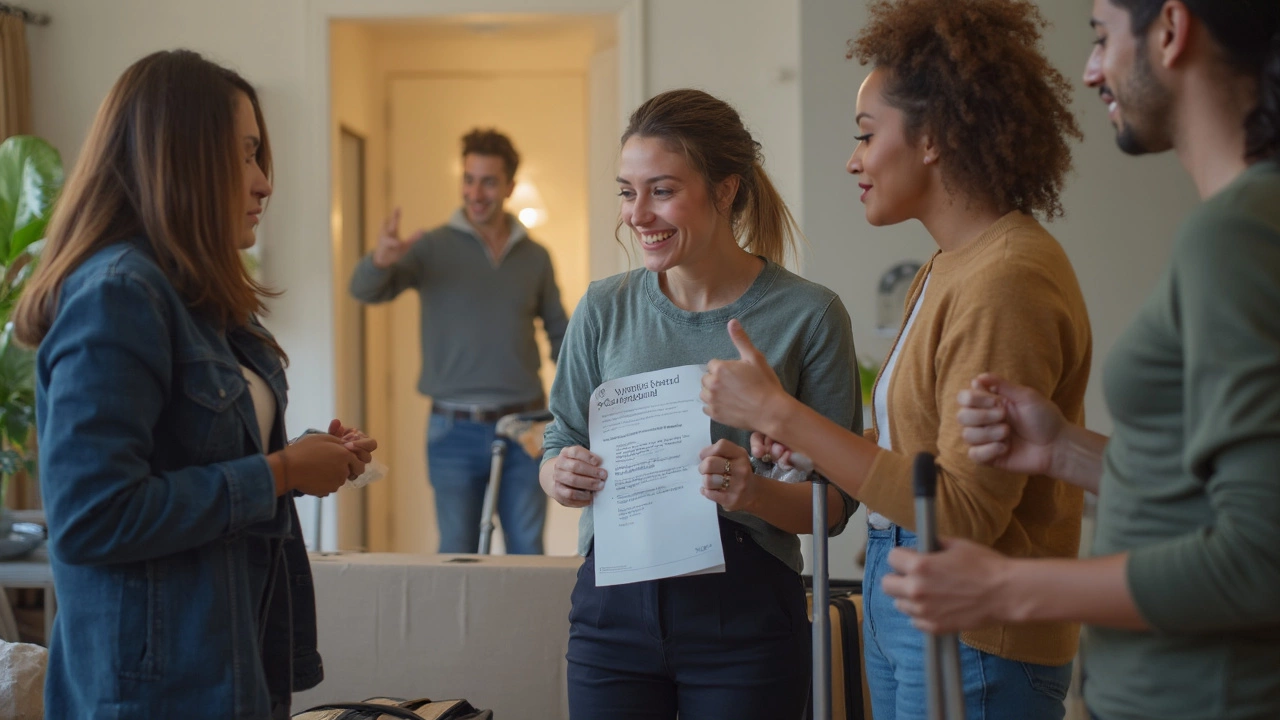
What Most Tenancy Cleaning Services Don't Cover
Here’s a surprise: not every cleaning task is part of that big job you’ve paid for. It’s easy to assume your cleaners will handle everything, but there are clear limits to end of tenancy cleaning. Miss these, and you could face a deduction from your deposit—or an awkward chat with your landlord.
Most cleaning companies don’t deal with walls. That means no wiping off old scuff marks, stains, or pin holes left behind. If you’ve put up posters or had a run-in with a leaky pen, those marks usually stay unless you ask (and often pay) extra.
Carpets are another thing to double-check. Standard packages include vacuuming, but full professional carpet cleaning—getting rid of deep stains or smells—almost always costs more. If your lease mentions professional carpet cleaning, bring it up before booking so there aren’t any misunderstandings later.
Outside space gets ignored too. If you’ve got a garden, balcony, or driveway, regular cleaning services skip mowing, weeding, or pressure washing. This goes for rubbish removal as well—if you’ve got bulky items or leftover stuff after moving, don’t expect cleaners to haul it away within the basic fee.
Another biggie: pest control. No end of tenancy cleaning team will tackle bedbugs or mice as part of the clean. Those are separate services entirely. The same goes for serious mold removal or fixing damages (like broken tiles or damaged blinds). Cleaners wipe, scrub, and dust—they don’t repair or replace things.
- Washing walls, removing scuffs and pinholes
- Full professional carpet cleaning and stain removal
- Cleaning outdoor spaces: gardens, patios, driveways
- Pest control or deep mold treatment
- Repairs or handyman jobs
- Moving or disposing of leftover furniture or big rubbish
Always read the fine print when booking a end of tenancy cleaning service. If there’s something you’re unsure about, ask before you sign up. Want your landlord off your back? Get all these gaps covered—either by booking extras or rolling up your sleeves for a final check yourself.
How to Make Sure You Pass Inspection
No one wants to lose their deposit, so your best move is treating the final inspection like a test—and your passing grade is a perfectly clean flat. There’s no secret: most landlords, especially in the UK, use the Association of Residential Letting Agents (ARLA) checklist during inspections. Missing even minor items could cost you £200-£400, which is what most tenants lose if cleaning isn't up to scratch.
Here's how you can lock in a pass without second-guessing yourself:
- End of tenancy cleaning should be scheduled after all your stuff is out. Dust and dirt hide under furniture, and movers usually track in more grime.
- Use the move-in inventory list for reference. Pay attention to marks, smells, or any damage that wasn't there in the beginning.
- Scrub the oven, fridge, and kitchen hood filters—about 50% of failed inspections are due to greasy kitchens, according to leading rental property managers.
- Hit easy-to-miss spots: skirting boards, inside window frames, and around plug sockets. Flash a torch at different angles; you’ll spot dust you’d otherwise miss.
- Take date-stamped photos right after you finish. Most disputes over deposits are settled with evidence, and clear pictures put you at an advantage.
- If you’re not using a professional service, recruit a friend to look over your work. A fresh set of eyes always finds something you missed.
For a quick snapshot of what often gets flagged by inspectors, check out these stats from a recent property survey:
| Area Most Commonly Failed | % of Inspections |
|---|---|
| Kitchen appliances (oven, fridge) | 52% |
| Bathroom (mould, limescale) | 34% |
| Carpets & floors | 27% |
| Windows & sills | 22% |
| Walls (marks, stains) | 18% |
If you want to be sure you’re covered, ask your landlord or agent for their cleaning checklist ahead of time. Some agencies email it to you, and following it step by step means fewer surprises on inspection day. And if anything goes wrong, you’ve got proof you did what was required.
